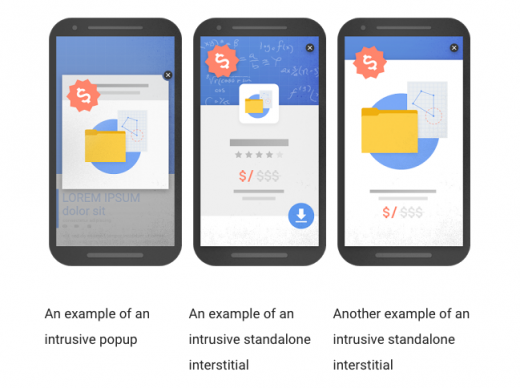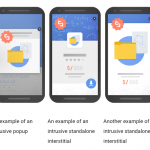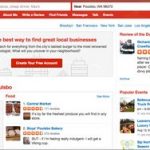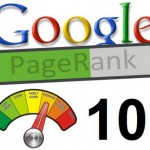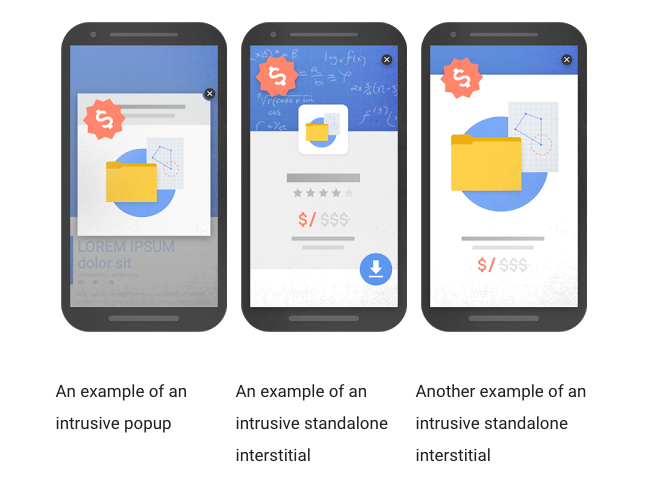Is Google Going To Kill Mobile Popups?
September 1, 2016
As part of Google’s ongoing effort to improve their user experience on search, Google is going to help users find the best answers to their questions faster, removing interstitials that are blocking mobile users from getting their answers, starting from January 2017. Is your site going to be affected?
Google’s power
In 2014, Google added a mobile-friendly label which appeared next to mobile search results, indicating which sites among the results had been formatted for mobile device. Google’s goal was to help users get a better mobile experience on websites directed from their search results.
Websites that are not mobile friendly cause an eye strain for users, many of whom need to zoom in and out on the page in order to navigate from their mobile device.
Google’s mobile friendly label obviously indicated a new variable in calculating Google’s secret ranking system, giving many websites a very strong incentive to adapt their site for mobile environment. Currently, over 85% of all pages scanned by Google’s bots have been found to be mobile friendly. If you wish to see how Google views your site on mobile you can click here.
The next thing Google chose to put on the spot is improving the mobile user experience, removing interstitial pop-ups that are actually blocking mobile visitors from getting an immediate access to a page’s content.
Why did this pop-up trend evolve?
In recent years we have seen more companies demand quicker patches to deliver various type of messages within their sites (both web and mobile). In many cases they are useful and provide a lot of added value to site’s visitors (e.g. by offering a unique discount or when promoting a related product on sale, based on the shopper’s potential behavior). However, in some cases, when popups are implemented without any relevant context, especially on mobile, where the real-estate is very limited – it simply blocks the visitors from getting to whatever it was that they were looking for. Aside from the future impact on your site’s search ranking, it’s important from a user experience perspective to avoid the following scenarios.
Type of Pop-ups you should avoid
According to Google’s post, you should consider the value that your pop-ups deliver to your visitors, and whether it’s intentionally blocking their access to your content, to serve other interests.
Here are a few examples of interstitial pop-ups, which affect visitors experience negatively when landing on your site:
(screenshot from Google’s blog post)
The marketing experiences which may negatively affect the user experience can come in various types and shapes, such as: popups that show immediately on a landing page or when scrolling down, expansion of the “above the fold” part where the main content isn’t visible.
Similar techniques that are used due to legal purposes, such as Cookie’s usage confirmation, or age confirmation etc, will not be considered by Google as interstitial thus not affecting your site’s ranking.
Furthermore, Google isn’t going to affect the site’s ranking when the popup is using a reasonable amount of the site’s real-estate along with a popup that is part of the visit context.
What’s next?
Below are a few examples of effective mobile message delivery, which can be used in a smart way, that doesn’t affect Google’s ranking, as they add value and do not block your visitors from seeing the content they are interested in:
1. Showing an interstitial as an integral part of the page, based on the shoppers digital behavior:
- In many E-Commerce sites it’s common to have a “carousel”, or rotating banners, at the very top of the homepage. This “carousel” can be switched in real-time to value added content/ promotion based on various parameters inc. marketing channels, personal interests, geography, demographics and more. For example: Websites that offer 10% for the first purchase in exchange for the visitor’s email address – could do that as part of the homepage experience, only for first-timers who never purchased before.

- Based on our statistics of over 1000 websites, 70% of site’s visitors land on specific pages such as category pages, product pages etc. Thus it’s recommended to add a banner with your main promotions not only on your site’s homepage but also on the entire site’s pages, e.g. above the categories, or at the bottom of a product page etc.
2. Instead of an invitation to sign-up for your newsletter as a pop-up when visitors first land on your site, trigger the interstitial according to their behavior, e.g: when a visitor just finished reviewing a product,is reading your content or even as a regular pop-up when someone is about to exit your site (at that point you would also have enough information to make this pop-up very relevant to the shoppers needs/interests).
3. Emphasizing your main selling points or call-to-actions using a reasonable amount of the screen’s real estate. For example, recommending on your hottest sections: new arrivals, clearance etc.

4. Limit those interstitials only to visitors arriving from certain sources, e.g. social media, advertising, email campaigns etc., in order to ensure continuity in your marketing messages, providing additional value to your visitors, or alternatively getting the most out of your traffic channels without hurting your Google’s ranking.
This post was originally published on Commerce Sciences Blog.
Digital & Social Articles on Business 2 Community
(15)

